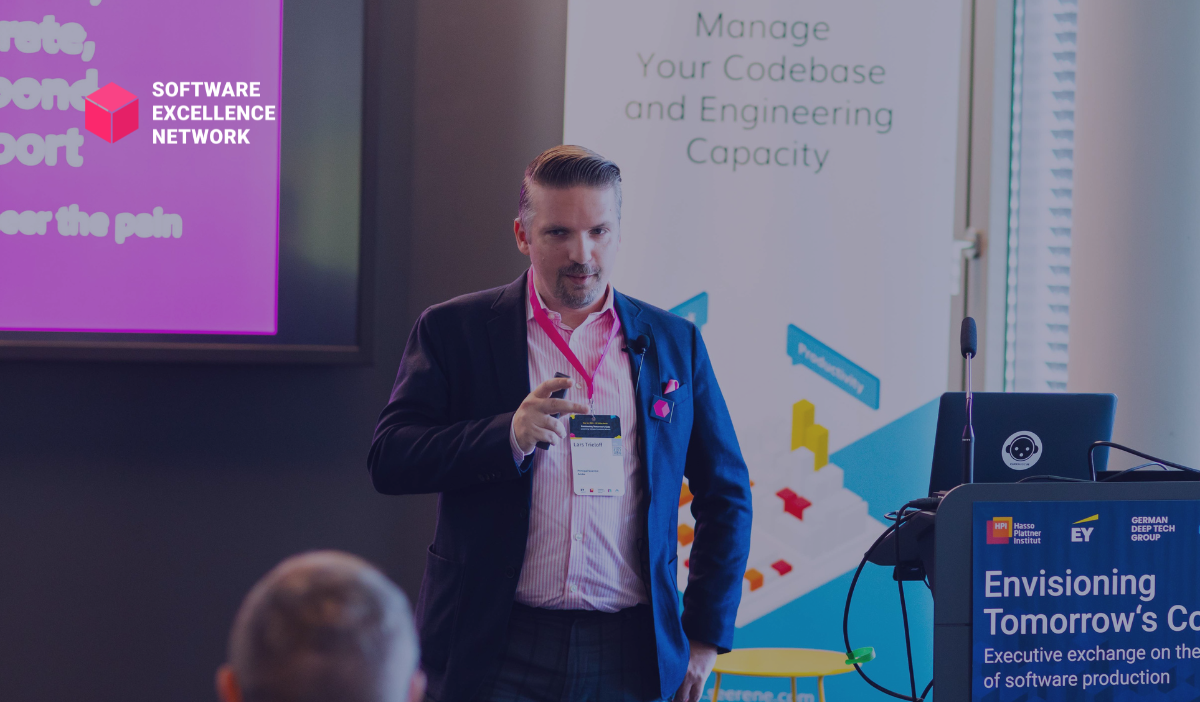
At the Envisioning Tomorrow's Code executive exchange, Lars Trieloff, Principal Scientist at Adobe, delivered a masterclass that showcased the evolution of Adobe’s approach to software innovation. Drawing on Adobe Experience Manager's (AEM) 30-year history, Trieloff unpacked the principles, culture, and strategies that have driven Adobe’s success in creating transformative enterprise solutions.
Adobe Experience Manager (AEM) may not be as familiar to the public as Photoshop or Acrobat, but it is a cornerstone of Adobe’s enterprise business. Originally developed as Open Web 2.0 by a small Swiss company, AEM evolved under Adobe’s stewardship into a billion-dollar platform for web content management. Trieloff recounted its transformation:
“This transformation is more than technical; it’s a mindset shift,” Trieloff emphasized. “We’ve moved toward software that’s as easy to use as it is powerful.”
Trieloff distilled Adobe’s learnings into several actionable lessons for software leaders and developers:
Citing Gall’s Law—“A complex system that works is invariably evolved from a simple system that worked”—Trieloff stressed the importance of beginning with a manageable prototype. AEM’s new SaaS version began at a hackathon with a small team building a functional prototype in a public library meeting room.
“Complexity is the enemy of working software,” Trieloff noted. “We’ve pivoted our architecture multiple times over five years because iteration reveals better ways to meet user needs.”
Trieloff highlighted the value of institutional knowledge. AEM’s current team includes developers who wrote its earliest versions and even the HTTP specification. This legacy provides a unique perspective on past successes and failures.
“History teaches us what worked, what didn’t, and what should be improved,” he said. “But we’re not afraid to rewrite the rules when necessary.”
In AEM’s subscription model, user satisfaction dictates success. Trieloff emphasized ruthlessly cutting unused features to streamline workflows.
“Features that go unused don’t belong in your product,” he said. “User needs come first, followed by customers and, lastly, developers. Developers exist to serve those needs—not the other way around.”
One of Adobe’s key innovations is its "shift-left" strategy, which dismantles the traditional silos separating developers from end-users. Adobe developers write their own tests, handle operations, and even provide direct user support.
“Connecting developers directly to users accelerates problem-solving and builds empathy,” Trieloff explained. “It’s not about inflicting pain but empowering developers to fix what frustrates users.”
Trieloff introduced “culturetecture,” a play on Conway’s Law, which states that organizational structures shape software systems. Adobe leverages this concept by fostering a collaborative, user-focused culture that informs its software architecture.
“Your organizational culture is a blueprint for your software,” he said. “Design a culture that prioritizes collaboration, simplicity, and user needs, and you’ll get software that reflects those values.”
Trieloff described the "diamond stack," a metaphor for using robust, simple tools that perform well under pressure.
“A diamond is just a glorified lump of coal,” he joked. “Under pressure, it becomes something of immense value.”
Trieloff introduced the concept of an "innovation budget"—a tradeoff between adding new features and ensuring stability. Developers at Adobe have the autonomy to decide how much complexity to introduce, avoiding the pitfalls of overengineering.
When tools break due to heavy use, Adobe upgrades to more advanced solutions. This philosophy ensures the tech stack evolves alongside the needs of the software and its users.
Since its launch, the SaaS version of AEM has delivered remarkable results:
“These metrics highlight the tangible value of focusing on user needs, simplifying complexity, and fostering a culture of innovation,” Trieloff said.
Trieloff’s masterclass demonstrated that building transformative software requires more than technical expertise. It demands a commitment to user-centric design, cultural alignment, and relentless iteration.
“Great software is never finished; it’s always evolving,” he concluded. “By embracing change, fostering collaboration, and focusing on what truly matters, we can create tools that empower users and drive meaningful impact.”
With these principles, Adobe continues to set the standard for innovation in enterprise software, proving that even the most complex challenges can be solved through simplicity, empathy, and a willingness to learn.
This masterclass was part of the Envisioning Tomorrow's Code executive exchange, which was hosted by the Software Excellence Network. The mission of the Software Excellence Network is to find solutions to the core problems facing corporate software development via open dialogue and the exchange of ideas among top IT leadership and academia. Interested in finding out more, click here.
A Note to Our Readers
This article provides a journalistic summary of the ideas shared by Lars Trieloff during his presentation. While we’ve highlighted the key concepts and innovations he discussed, the full depth of his insights and examples can only be appreciated by watching the complete session. If you’re intrigued by these ideas and want to hear them explained directly by the speaker, we encourage you to watch the full video of his presentation. If you have any questions or concerns, please contact us.
These Stories on Events/Webinars
August-Bebel-Str. 26-53
14482 Potsdam, Germany
hello@seerene.com
+49 (0) 331 706 234 0
Generative AI Seerene GmbH
August-Bebel-Str. 26-53
14482 Potsdam, Germany
hello@seerene.com
+49 331 7062340